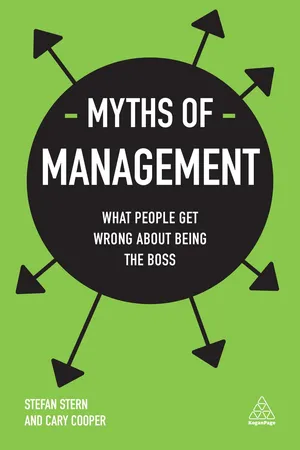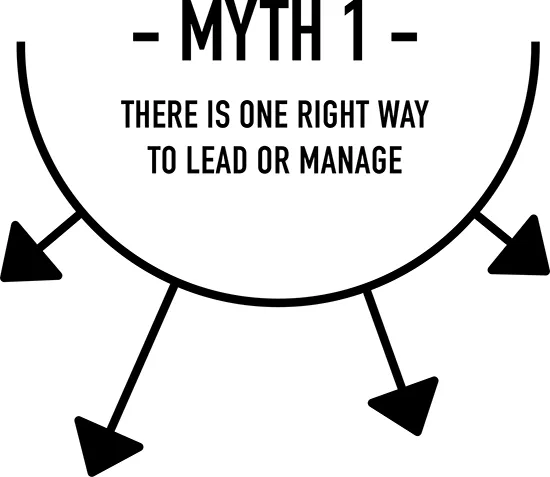![]()
Beware those who say they have ‘cracked’ leadership and management for good.
Wouldn’t life at work be easier if there were simple solutions to our complicated problems? There would be so much less to think about. Less stress. Your repertoire of behaviour and choices would be that much smaller. You could carry on in the knowledge that leadership style A or management decision B would be all there was to it. Job done – literally.
This yearning for simplicity partly explains why you see all those management books at the airport offering seductive promises such as ‘three steps to compete and win’ or ‘the right way to lead’.
But there is no one right way to lead or manage. People are different.
Circumstances change. Businesses and organizations go through different life stages and cycles, as do the prevailing trading conditions. The competition may change the way they do things, requiring you to change too. Leaders and managers have to be able to adapt, just as they want their teams to adapt.
The idea that there might be only ‘one right way’ was challenged by Paul Hersey and Ken Blanchard (1969) nearly five decades ago. They developed the idea of ‘situational leadership’ – a more adaptive and flexible way of considering the task of leaders and managers.
People at work need both direction and support, in varying degrees. Hersey and Blanchard argued that, depending on who you were working with and when, at least four different types of subtly varying behaviour were required.
Initially, while starting out on a task or a project, a team might need quite a lot of direction – this is ‘telling’. As the nature and demands of the task become clearer, a bit less direction and a bit more support is needed. There is more two-way communication going on – this is ‘selling’.
Once work is truly under way, more of the decision making is shared and teams carry on almost autonomously – with even less direction, even more support – this is ‘participating’. And when responsibility for the work has been fully taken on by the team virtually no direction is needed, only interested but detached support is required – this is ‘delegating’.
The psychologist Rob Davies has compared this, not entirely seriously, to a reductive description of how to play golf (conversation with authors). A golfer has only four different types of shot to play: hit the ball a long way, hit it a short way, hit the ball from the grass, or hit it from sand. (Keen amateur golfers may object that their experience of the game throws up rather more variety, and less linear progress, in their struggles on the course.)
But the point is the same. One management or leadership size, or style, will not fit all situations. This is one of the reasons that Rob Goffee and Gareth Jones, authors of the essential Why Should Anyone Be Led by You? (2006), argue that the simple instruction to ‘be yourself’ is inadequate advice to any aspiring boss. They add the qualifier ‘with skill’. You need what they call ‘situation-sensing skills’ to judge how (and how much) you need to intervene in any situation (see also Myth 28 on authenticity).
Good role models, bad role models
Why, though, are we still so susceptible to the idea that one type of leader or manager may have ‘cracked it’ once and for all, and that all the rest of us need to do is try to imitate and emulate that person? It is partly that appeal of the simple solution: ‘all you need to know’. (We should remember, however, the view usually attributed to the American journalist H L Mencken, that for every complicated problem there is a solution that is simple, neat and wrong.)
As Phil Rosenzweig of IMD in Lausanne has also argued, in his book The Halo Effect (2007), we can be tempted to believe the myths (or simple stories) that organizations tell themselves and the outside world about how they have succeeded, stories which in turn are spread and sustained by journalists and business academics.
Thus CEO A or B is said to have embodied an ideal leadership style and approach for all times. Be more like Sir Terry Leahy or Steve Jobs or Lou Gerstner, it is said, and all will be well. But this is bad advice.
Leaders and businesses succeed at a given time, for a limited period. But there are no permanent victories, and no single way of leading and managing that will always work. Indeed, temporary success so often leads businesses to think, mistakenly, that they have less reason to change what they are doing. Tesco is just the latest formerly dominant player that has had to rethink completely how it operates, when only a few years ago the company (and its management) was regarded as infallible. The point about Jim Collins’ book Good to Great (2001) was not that his exemplar companies had worked out the timeless secret of success, rather that in a given period of time they had made important changes that led to success.
As the writer Eve Poole tells us in our interview with her (Appendix 2), leadership is not static. ‘It is a craft skill, and it requires daily practice… the work I have done suggests that real leaders know this, and work with it, seeking out opportunities to hone their skills in order to future-proof their leading.’ Dr Poole calls this process ‘leadersmithing’.
‘Leadersmithing… establishes the recipe for top leadership and sets out ways to learn this either through weekly exercises or by seeking out exposure to critical incidents under pressure, to cement the learning and enable consistent and sustained performance under pressure in the future’, she says. ‘It is about layering on experiences, deliberately rather than at the hand of fate, to develop the character and muscle memory to lead in the full range of situations likely to occur in the future.’
‘Why you should be more like me’
Tolstoy’s famous line about families – that while happy ones are more or less alike, unhappy ones are unhappy in their own particular way – does not apply to businesses and organizations. The happy ones are unique too. This is why there can never be one right way to lead or manage in any context. The former global managing partner of McKinsey, Ian Davis, once made this point well in a conversation with the authors. ‘All generalizations about business are wrong’, he said. And when you consider how many businesses his firm has studied over the years, this seems like a useful (and, unusually, cheap) piece of advice. You have to try to understand the situation you find yourself in now, and operate in the way that the situation demands.
Indeed, Davis once also brilliantly summed up what is wrong with those piles of brash business books piled up at the airport* that promise to reveal the secrets of superstar business leaders. Whatever the official title of the book was, the true sub-heading was really: ‘Why you should be more like me’ (conversation with authors). But no matter how many black polo-neck jumpers you buy you will never be Steve Jobs. Don’t try to be more like them. Be more like you. It’s all you’ve got, after all.
Note
* Of course, if you have bought this book at an airport, thank you.
![]()
The self-serving talk of how hard it is to be a leader ignores the stresses and pressures faced by the rest of the workforce.
Beware the chief executive who tells you, as many do, that ‘letting go of people’ is the toughest thing they ever have to do. They probably don’t really mean it. In a world where human beings have become ‘headcount’, and cost savings and efficiencies are a permanent top agenda item, the idea that CEOs might be squeamish about making cuts is pretty fanciful. Restructurings and redundancies are the order of the day, sometimes unavoidably. Save your sympathy for those on the receiving end of those decisions.
It is easy for bosses to console themselves with the thought that few people appreciate how tough their job is. The buck stops with them, it is true. They may get paid the most, by far, but they will take the blame if and when things go wrong. It is their reputation that is on the line.
But consider the ways in which it really isn’t tough at the top. First, you have a lot of help on offer, for much of the time permanently on call. It’s not just the number of personal assistants. Colleagues, whose future career prospects will depend on the judgements you form about them, will be only too keen to help out too.
All logistical challenges in your life will be taken care of. You will travel in comfort and stay in luxurious accommodation. You will be listened to carefully. You will get to speak first, and last, to sum up the conversation and offer your conclusion ahead of everybody else’s. You will get to choose which tasks you want to carry out when, and which tasks you can happily delegate. You will have much more autonomy than anyone else in the business.
It’s tough in the middle, and at the bottom
Sir Michael Marmot’s lengthy ‘Whitehall studies’ (1991) – research into the health and well-being of civil servants – have found that it is officials working at lower levels in the hierarchy, and not at the top, who face the greatest stress, and are most at risk of suffering serious health problems.
The study of those people with low ‘job control’ found tha...


